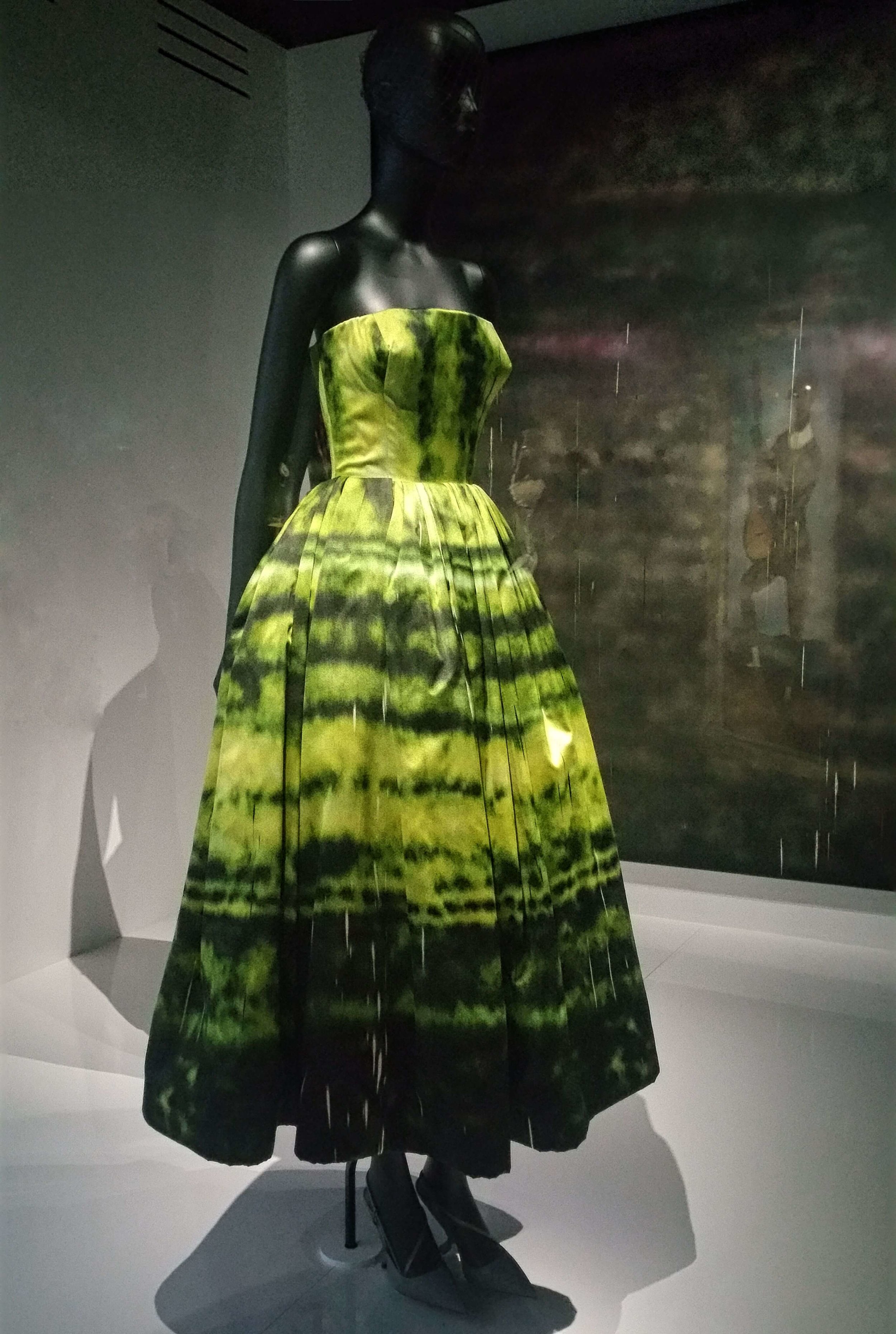Christian Dior, Designer of Dreams
“My prime inspiration is the shape of the female body, for it is the duty of the couturier to adopt the female form as his point of departure and use the materials at his disposal so as to enhance its natural beauty”
Oriental inspirations through the decades/ Photo: Couturenotebook
“Christian Dior, Designer of Dreams” should really be called Christian Dior, ‘Designers’ of Dreams, for while the great couture house named after its founder is stylishly celebrating its 70th year with a magnificent exhibition at Musée des Arts Décoratifs in Paris, the scenography makes it clear the house has remained as strong and innovative as in its early days thanks to six designers (Marc Bohan, Yves Saint Laurent, Gianfranco Ferré, John Galliano, Raf Simons, Maria Grazia Chiuri) who have embraced Dior's codes and push them forward, as well as the work of its anonymous petite-mains.
The Iconic Bar Suit/ Photo: Couturenotebook
Ral Simons and Sterling Ruby’s artwork /Photo: Couturenotebook
Since it opened a month ago, the exhibition has drawn more than 100,000 visitors, an attendance record for the museum, and for good reason. Spread over 3,000 sqm, this blockbuster exhibition features over 300 dresses from the house’s archives, as well as loans from museums and private collections, and has been smartly curated by Florence Müller around 23 themes.
The Dior creations are presented amongst art works and furniture that help contextualize them (for example a dress by Raf Simons is set next to Sterling Ruby’s artwork that inspired it) and there is so much to read you can easily spend half a day wandering around.
Each creative director is given their own room, which helps visitors appreciate their work better while the chronological layout gives a sense of how fashion continued to evolve through the decades since Dior's death.
Yet, the curation works best when the work of each designer is consolidated around themes like Asia, Africa that really underline how each designer embraced the Dior DNA while adding their own creative sensibilities.
Visitors are first greeted with the iconic shape of the Bar suit that embodies the New Look silhouette Dior introduced in his first 1947 Spring-Summer collection: a post-war hourglass silhouette with a tiny waist accented by a structured, bone-lined bustier corset and a voluminous skirt over hip padding and petticoat, his interpretation of a flower-woman.
“The beginning of the Dior saga paved the way for the most extraordinary epic in the history of Haute Couture. Bearing the promise of a bright new fashion future, Christian Dior was perceived by the world as a hero of the postwar period, a Frenchman of even greater renown than General de Gaulle,” Muller wrote in the book accompanying the exhibition, “At a time of rationing and shortages, the fashion world was languishing, no longer sparking desire or inspiring change. Christian Dior brought a breath of fresh air, the hope of a better world where women would be free to make themselves beautiful and attractive.”
The exhibition opens with the story of Christian Dior’s life: his childhood in Granville, his training as a fashion illustrator and his work as an art dealer (1928-1934) in partnership with his friends, first Jacques Bonjean then Pierre Colle. Discover a young Dior through the eyes of Paul Streecker in a 1928 painting and through those of Bernard Buffet in a 1954 oil.
Dior was a lover of antiques and objets d’art, as well as a collector of Art Nouveau and 18th century furniture , and he drew on all these sources for inspiration in his design.










Among the themes explored in the exhibition are Dior's links with art and photography, references to the neoclassical decorative style, interest in far away travel and exoticism, and always, the fascination for floral motifs.
Miniature versions of Dior gowns, accessories, and drawings are also displayed in a sequence of different hues.









Particularly effective is the presentation of Dior's femme-fleur creations in a paper garden full of wisteria and roses.








A succession of six galleries is dedicated to each of Christian Dior's successors, with the curator retracing chronologically the daring choices of the very young Yves Saint Laurent, who was followed by the more rational pick of Marc Bohan, then the flamboyant arrival of Gianfranco Ferré, the dramatic era of fashion punk John Galliano, the minimalist statement of Raf Simons and, lastly, the new feminist vision of fashion by Maria Grazia Chiuri.






The expertise of the petite-mains is not forgotten and presented in an atelier setting where seamstresses are at work, surrounded by toile, while one of the long galleries provides an overview of how the Dior lines and the house's allure have developed since 1947, illustrated with gowns and extracts of films and catwalk show videos.
The exhibition ends in a lavish ballroom setting where some of the brand's most iconic ball gowns are presented, including pieces worn by celebrities like Princess Grace of Monaco, Princess Diana, Charlize Theron and Jennifer Lawrence.




















